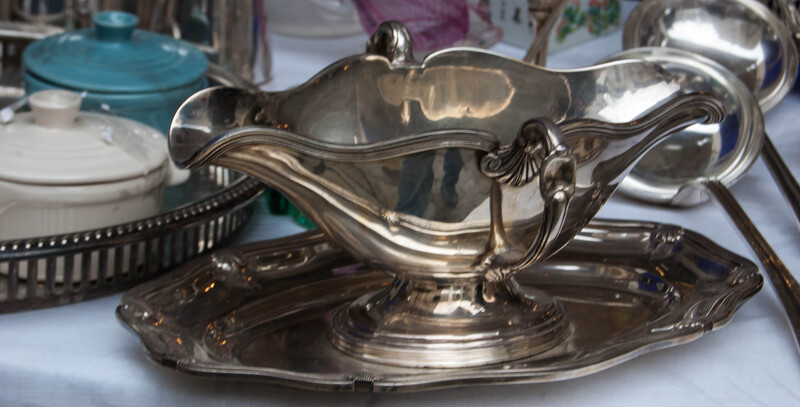Compassionate Clutter Removal and Hoarder Clean Up for Healthier Living
Decluttering your home can be a deeply transformative process--especially when you approach it with kindness and empathy. For those struggling with hoarding disorder or living in overly cluttered spaces, the benefits of compassionate clutter removal cannot be overstated. This comprehensive article offers an in-depth look at clutter removal, hoarder clean up, and how both can significantly improve health, safety, and overall well-being.
Understanding Hoarding and the Importance of Compassionate Clutter Removal
The term "hoarding" refers to the compulsive accumulation of possessions, often to the extent that it disrupts the ability to live comfortably and safely. Clutter removal is an essential step toward regaining control of one's environment, but the process must be handled with compassion due to the emotional connections formed with possessions.
- Hoarding disorder affects up to 6% of the population, impacting individuals of all ages and backgrounds.
- Clutter can lead to increased anxiety, depression, and even health hazards such as mold, pests, and fire risks.
- Judgment-free cleaning and organized decluttering are critical for lasting change and personal dignity.
Why Compassion Matters in Clutter Removal
It's vital to remember that every person has a unique relationship with their belongings. Judgmental or aggressive approaches are likely to be counterproductive. A compassionate clean up prioritizes empathy, patience, and respectful communication throughout the decluttering journey.
Key aspects of compassionate hoarder clean up include:
- Listening to the individual's feelings and concerns about specific items
- Allowing them time and space to process the decluttering process
- Respecting sentimental value attached to possessions
- Creating a supportive environment free from criticism

The Health Benefits of Clutter Removal and Hoarder Clean Up
An organized, clutter-free living space provides numerous health benefits, particularly for those emerging from hoarding situations. Removing unnecessary items and cleaning up excess clutter can dramatically improve both physical and mental health.
Physical Health Improvements
- Allergen Reduction: Less clutter means fewer places for dust, mold, and pet dander to accumulate, leading to improved air quality and reduced allergy symptoms.
- Pest Control: Clutter attracts pests such as rodents and insects, which can spread disease. A clean home prevents infestations.
- Fall and Fire Hazards: Excess belongings pose serious trip and fire hazards, especially for older adults. Decluttering creates safe pathways and reduces risk.
- Improved Hygiene: Cleaner spaces allow for better sanitation, helping prevent infections and illness.
Mental and Emotional Health Benefits
- Reduced Anxiety: Organized environments are less stressful, allowing for more peace of mind and relaxation.
- Improved Focus and Productivity: Clutter distracts from daily tasks; a tidy space promotes efficiency and clarity.
- Boosted Self-Esteem: Successfully removing clutter and maintaining cleanliness can instill a strong sense of accomplishment and self-worth.
- Enhanced Social Connection: People who are embarrassed by clutter may avoid inviting friends and family over. A clean home encourages healthy relationships.
The Step-by-Step Process: Compassionate Clutter Removal
Every hoarder cleaning service or compassionate junk removal project should follow a systematic, supportive approach tailored to the individual's needs and comfort level. Here's an effective outline:
1. Initial Assessment and Planning
- Meet with the individual or family to discuss goals, concerns, and emotional triggers.
- Conduct a walk-through to assess the extent of clutter and identify hazards.
- Create a customized clutter removal plan that sets realistic, gradual goals.
2. Establishing a Safe, Non-Judgmental Environment
- Foster trust and reassure the person that the process is supportive, not punitive.
- Communicate that the goal is a safer, healthier home--never to shame or judge.
3. Sorting and Decision-Making
- Work together to sort belongings into categories: Keep, Donate, Discard, Recycle.
- Encourage the individual to make choices at their own pace.
- Respect decisions about sentimental items and photographs.
4. Responsible Disposal
- Arrange for ethical junk removal, recycling, and donation of unwanted goods.
- Dispose of hazardous materials (batteries, old cleaning products, medical sharps) according to local guidelines.
5. Thorough Cleaning and Sanitization
- Clean and sanitize surfaces once clutter is removed.
- Deodorize and ventilate the space to improve air quality.
- Arrange for professional pest control, if needed.
6. Organizing the Clean Space
- Develop simple, maintainable storage solutions.
- Label containers and shelves for easy access and ongoing organization.
7. Ongoing Support & Maintenance
- Check-in periodically to provide encouragement and help with maintaining clutter-free habits.
- Encourage participation in therapy or support groups specializing in hoarding behavior, if appropriate.
Choosing a Compassionate Hoarder Clean Up Service
Not all cleaning and junk removal companies are equipped to handle the sensitive nature of hoarder clean up. Look for specialists who emphasize compassion, discretion, and experience.
- Verify training in mental health first aid and trauma-informed care.
- Read reviews for testimonials about professionalism, empathy, and effectiveness.
- Ask about customizable cleaning plans and privacy assurances.
- Ensure proper insurance and licensing for clutter removal and biohazard situations.
An ideal compassionate hoarder clean up service will work side by side with the client, providing resources and referrals as needed.
Prevention: Tips for Maintaining a Clutter-Free Home
Once you've successfully completed a hoarder clean up or clutter removal, maintenance is key. These simple strategies help preserve your healthier living space:
- Adopt the "One In, One Out" Rule: For each new item brought home, donate or discard one existing item.
- Set Weekly or Monthly Decluttering Sessions to regularly review possessions and prevent buildup.
- Develop organizational systems--labeled bins, baskets, and shelves keep everything accessible and orderly.
- Seek support if you notice early signs of hoarding or feel emotionally overwhelmed by clutter. Talk to a counselor or join a support group.
- Celebrate small wins--each step toward a clutter-free home is a step toward a healthier life.
Emotional Healing and Clutter: How Compassion Fuels Long-Term Change
Clutter often holds emotional significance--representing memories, identities, or even lost loved ones. That's why compassionate clutter removal is so important. A sensitive, understanding approach not only helps clear physical trash, but also supports the emotional journey needed for long-lasting change.
Tips for Navigating Emotional Attachments:
- Photograph sentimental items before parting with them, preserving memories digitally.
- Share stories about cherished belongings with friends or family for emotional closure.
- Allow for gradual progress; don't expect every room to be finished in a day.
- Seek professional emotional support for grief, trauma, or underlying mental health needs.

Frequently Asked Questions About Compassionate Hoarder Clean Up
Is hoarding really a mental health disorder?
Yes. Hoarding disorder is recognized by the Diagnostic and Statistical Manual of Mental Disorders (DSM-5) as a mental health condition characterized by difficulty discarding possessions, leading to cluttered living spaces and significant distress or impairment.
How can I help a loved one with hoarding disorder?
Approach them with empathy, avoid criticism, and offer assistance in small, manageable steps. Encourage them to seek help from a therapist or a professional compassionate clutter removal service.
How long does a hoarder clean up take?
The time required varies depending on the degree of clutter and the individual's comfort level. Some projects take a few days, while others may need weeks or even months for a thorough, respectful transformation.
Can hoarding and extreme clutter be prevented?
Early intervention, therapy, and regular decluttering habits are all effective at reducing the risk of severe hoarding. Community support and mental health education can also make a big difference.
Conclusion: Embrace Healthier Living with Compassionate Clutter Removal
Whether you're starting your own journey or helping a loved one, remember that compassionate clutter removal and judgment-free hoarder clean up are not just about getting rid of things--they're about restoring safety, peace, and self-respect.
By embracing a kind, patient approach, you'll find that removing clutter is not just a cleaning task but a profound act of care. Choose compassion, and take the first step toward a healthier, more fulfilling home life today.
- Seek professional, compassionate hoarder clean up services when needed.
- Practice ongoing maintenance and supportive habits to keep clutter away for good.
- Remember: healing the home starts with healing the heart.
